US snowstorm: What to do if it all goes wrong
- Published
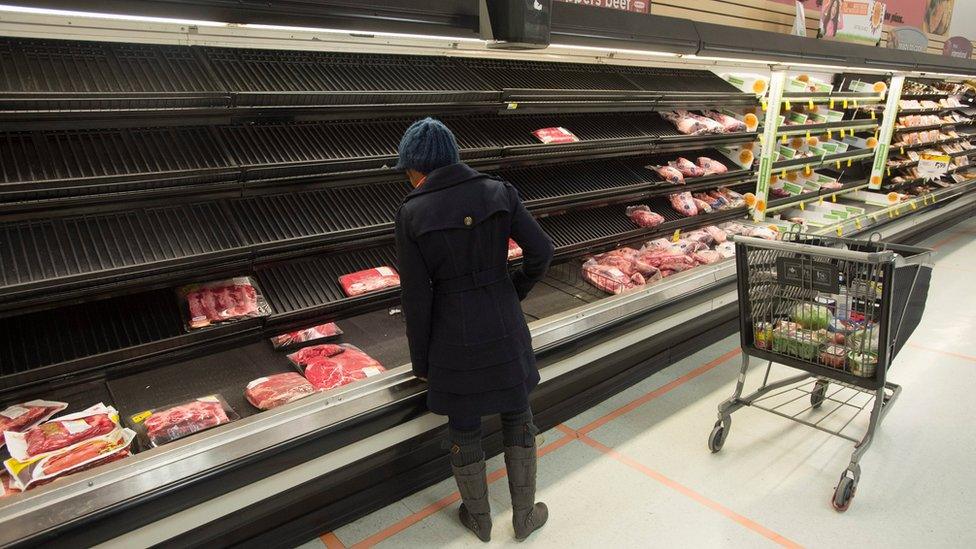
Empty shelves at a shop in Virginia after shoppers stocked up to prepare for the snowstorm
Many Americans have been bulk-buying food in case they get snowed in over the weekend. But what if the power cuts, leaving you unable to cook the meat you have stocked up on?
How can you use your dog to measure the snowfall? And did you know why you should never melt snow with hot water? The answers to these and other snowstorm-related questions are here:
Maybe you are hunkering down for the weekend, like these shoppers who are stockpiling food in anticipation of 2ft (60cm) of snowfall. Your Netflix subscription is up-to-date, you have pots full of popcorn ready to go, or the board games and novels have been pulled down from a dusty shelf.
But if the mains electricity cuts out, you need a back-up plan.
First, you need at least three gallons of drinking water per person - a gallon per day. You need a few torches as a light source, ideally wind-up or solar-powered so there is no need for extra batteries. Make sure your first aid kit is full and the medication you need is with you in the house.
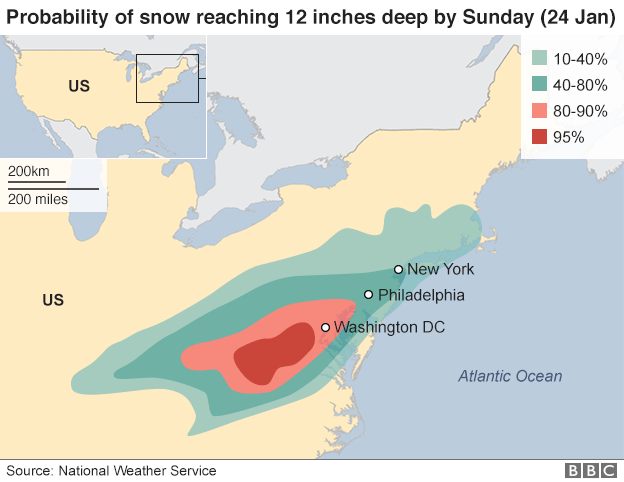
Now to see about cooking that food.
If your electric hob is out, consider a pot over a fire, or even crafting a home-made oven, external with cardboard, glass, wood and aluminium foil.
If things go drastically wrong and you lose your tin opener in a snowdrift, take a leaf out of these gentlemen's, external book. They can open a tin can with only their bare hands and a rock - and at no point do they smash everything to bits. The site is in Russian but the video is in English.
Pets
Of course you remembered to buy enough dog food. Keep mammals inside the house in the warm, rather than outside in a yard or garage.
If your pet is of the kind that requires electricity-based care, you might panic in a power cut. Fear not - there are some short-term alternatives that could just see you through.
Reptiles, being cold-blooded, need a heat lamp or they will go into hibernation mode. You can cheat, for a short time, by throwing a blanket over your snake or lizard's tank at night - remove it when the sun comes back up - and turning the heating thermostat up in that room. They need to be hot to digest food, so avoid feeding them for the duration of the power cut.
Goldfish are a little more tricky. Their filters keep the water healthy. You may wish to buy or hire a generator for the aquarium. If the water starts to cloud up, you can add ammonia-reducing liquid. It is best not to feed your fish in a power cut.
We defy you to have any pet as at-home in the winter weather as this adorable snow-diving squirrel. And if your dog is still keen to run about despite the cold snap, you can use it as a handy way to check the snowfall levels.
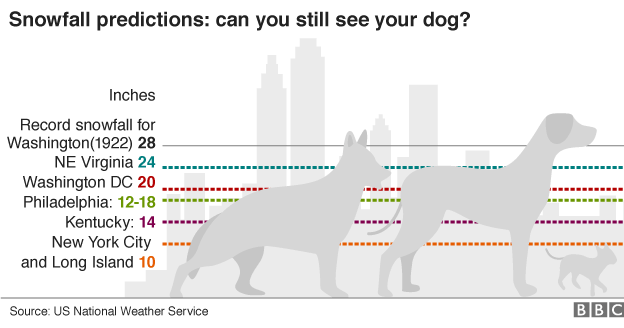
Keeping warm
Wear as many layers as you need. Exercise - star jumps or a jog up and down the stairs will get your blood flowing and keep you warm.
If the air inside the house is chilly, you could consider taping bubble wrap over the windows. This will let sunlight in but keep the cold out. Stuff rags into the gaps around the edges of doors, and when it gets dark, use the heaviest curtains you have.
In Japan, people turn to the kotatsu, external when they're at home on wintry days. This is a low table with a built-in heat source and a blanket so you can stay snug and warm while sitting at it.
It might be a bit too late to get one delivered in time for the January 2016 blizzard, but maybe you can get one for next time.
The snow outside your house
If you have to shovel snow, wear lots of layers to keep warm for the job. Do not do it straight after eating or smoking and if you are not usually very active, get someone to help. It is a strenuous job and about 100 people die of heart attacks while shovelling snow every year.
If you are in Massachusetts or some parts of Canada and you would prefer not to get up early to dig your car out of the snow before work, you can outsource the job through an app.
Be a good neighbour - check whether the people around you need any help.
And never pour hot water on snow to melt it. It might seem like a good idea at the time, but if it is cold enough, the water will freeze again into hazardously slippery ice.
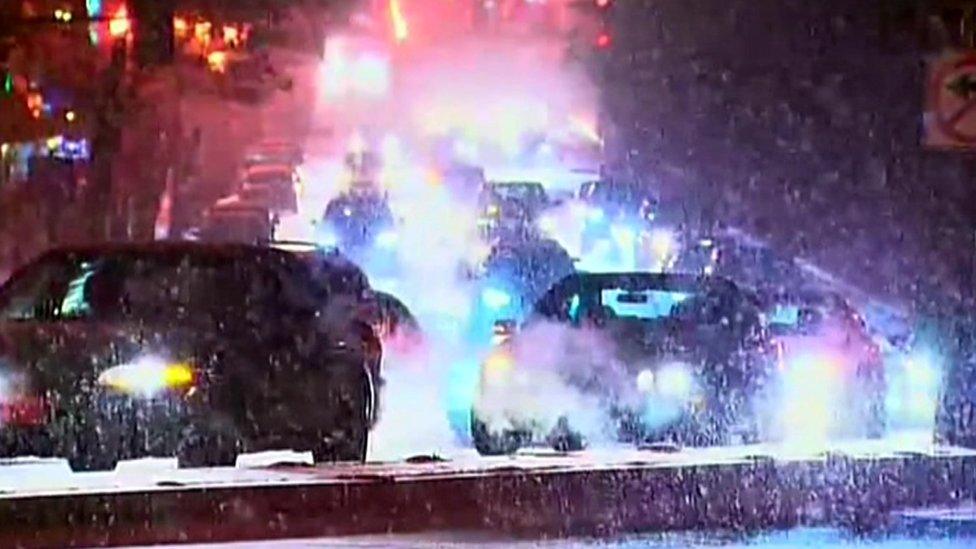
It takes preparation and skill to drive safely in a snowstorm
Driving
Do you really have to drive?
Really?
Okay. If it is an urgent and necessary journey that absolutely cannot be postponed, make sure to bring:
An ice scraper for the front windscreen
A blanket and warm clothes, plus a high-vis jacket
Jump leads
A snow shovel
Let your car warm up before you start the journey so the windows can de-mist and you can see out on all sides.
Clear your lights, mirrors and registration plates of snow and frost so you can see other drivers and they can see you.
Winter tyres - with deeper tread and better grip - are a good idea to help you drive more safely in the snow. In fact, in some European countries including Germany and some parts of the Czech Republic, they are a legal requirement.
Once you're moving:
Drive slowly and give extra time to every action, whether braking or changing lanes
Keep an increased distance between you and the car in front - stopping distances can be up to ten times longer than you are used to
If your car starts to skid, take your foot off the brake and turn the wheel in to the direction of the skid
Watch: extreme winter driving on Europe's longest ice road
If you get stranded while driving, run the heating for short bursts of time but crack the windows open slightly. Make sure the snow does not block up the exhaust pipe. This is important. It will protect you from carbon monoxide poisoning.
The authorities
Schools have been shut in Washington DC, and federal government offices closed at noon on Friday.
All the better for hunkering down.
But other parts of the world deal with blizzards on a much more regular basis.
In Moscow, there can be 15,500 snow-clearing vehicles on the streets in one night. One type of vehicle is designed to scoop the snow up, push it through an uphill conveyor belt into a truck and drive in to another part of town to be melted.
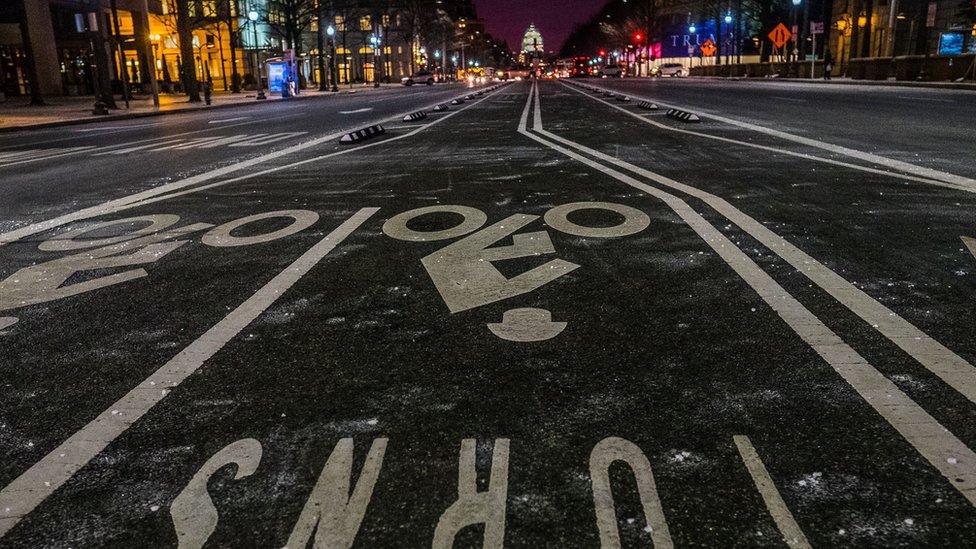
Pennsylvania Avenue looking toward the U.S. Capitol in Washington D.C. is almost deserted
Snow is removed and melted in most parts of the USA too. Alternatively, dump trucks will sometimes pile snow up into temporary mountains.
"It's pretty cool," says Ken Boegeman, who runs a snow and ice removal company in the US.
He says that for local authorities, the first priority is public safety.
"It's about how to make sure that the public can get from one place to the other, and especially that emergency crews can get through," he says.
But he says individuals should keep their common sense about them, to make sure they keep safe.
He says: "If there's two or three feet of snow in front of your house, maybe it's not the best day to go to the shoe store!"